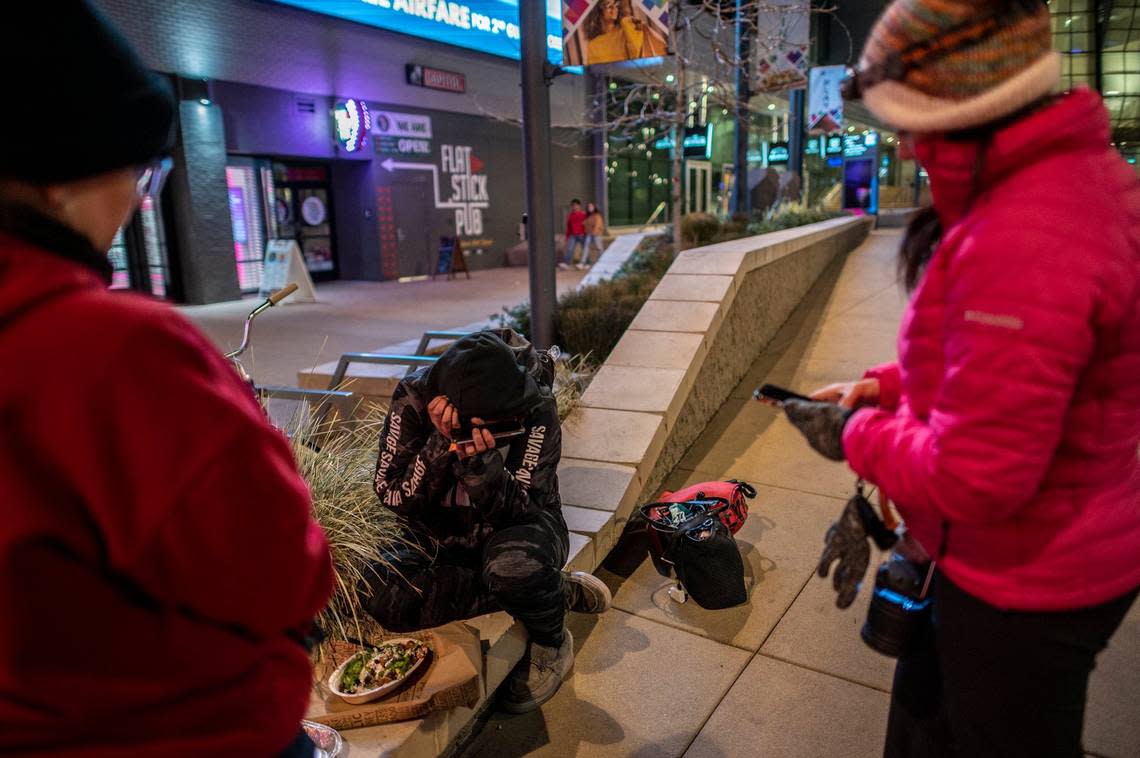Sacramento’s latest homelessness count shows a decline. Here’s how much it dropped

Sacramento has roughly 3,000 fewer homeless people on its streets and in its shelters than it did two years ago, a new report has found.
There are now an estimated 6,615 homeless people living in Sacramento, a steep 29% decrease from the 9,278 people volunteers counted during the preceding survey in 2022. Elected officials are touting the new number — no longer higher than San Francisco’s — as a sign that efforts to combat the homeless crisis are finally working.
“There are still too many people experiencing homelessness for us to declare victory, but maybe homelessness is not so intractable after all,” stated Mayor Darrell Steinberg, who has made homelessness a major part of his platform as mayor since he was elected in 2016. “The dramatic reduction in Sacramento’s Point in Time count, particularly the 41% drop in unsheltered homelessness, undeniably affirms that the steady course we set seven years ago to address this state and national crisis is working.”
The report is the product of roughly 600 volunteers fanning the county during two cold nights in January to perform the federally-mandated count. Though lower than 2022, the new number is still significantly higher than the 5,561 homeless people counted in 2019, showing a continued overall increase from pre-COVID 19 levels.
Among the report’s findings:
▪ There are 3,944 people sleeping outdoors — 41% fewer than in 2022 — and 2,671 are in shelters.
▪ Over three fourths of the homeless people living outdoors — 3,053— live in the city of Sacramento, while 561 live in the unincorporated county, 133 live in Folsom and 83 in Elk Grove.
▪ There are 347 homeless families with children — 17% fewer than in 2022. About 97% of them are in shelters, mostly in hotels.
▪ There are 548 homeless veterans — down 8% from 2022 — including 330 who are sleeping outdoors.
▪ There are 2,965 people who are chronically homeless, meaning they’ve been homeless for over a year and have some sort of disability, and 68% of whom are sleeping outdoors.
▪ Black people are three to four times more likely to be homeless in Sacramento.
▪ American Indian/Alaska Native people are five to six more times likely to be homeless in Sacramento.
▪ There are 2,788 homeless adults with serious mental illnesses, 83% of whom are sleeping outdoors. Mental illnesses were considered serious if the homeless person identified that his or her mental illness made it hard to find and keep a job.
▪ The homeless are mostly Sacramentans. At the time of the count, 90% of the homeless people had been Sacramento residents for at least six months, and 62% had been lifelong residents
▪ Most of the homeless reported that they want to be housed. Among a list of suggestions, 58% of people said the top thing the region could do better to help them was increase affordable housing.
▪ Half of the homeless people were experiencing homelessness for the first time.
▪ A quarter of the homeless people had lived in foster or group homes prior to turning 18.
Since 2020, city and county leaders have opened hundreds of new shelter beds, including along Roseville Road and in south Sacramento. Despite that, the number of total people in shelters only went up 2% since 2022, the report found. That could be partly due to the closing of the Roomkey motel shelters, which included over 900 rooms, funded by the state during Covid, said Sacramento Steps Forward CEO Lisa Bates.
Today the city consistently has a wait list of over 2,500 people for one of its roughly 1,300 city shelter beds, according to city data.
In addition to the shelters, the city, county and nonprofits have gotten better at working together to provide mental health services and at placing more people into permanent housing out of the shelters, Bates said. Last year there were 2,421 people placed in permanent housing units, which was 675 more than 2022, according to the nonprofit.
Positive data points such as that one will help Sacramento still receive consistent levels of federal funding to address homelessness, despite the lower count, Bates said. However, the lower count could decrease the amount of money Sacramento gets in state money.
In the Bay Area, Oakland’s homeless population increased about 9%, to 5,490, while San Francisco’s increased 7% to 8,328. In 2022 Sacramento for the first time had a higher number than San Francisco. Though people cautioned that comparing raw numbers can be fraught given the difference in population sizes, it’s often cited as a stain on the capital city’s reputation.
Sacramento officials are set to release more more information on the new count, as well as the full report, on Wednesday.


